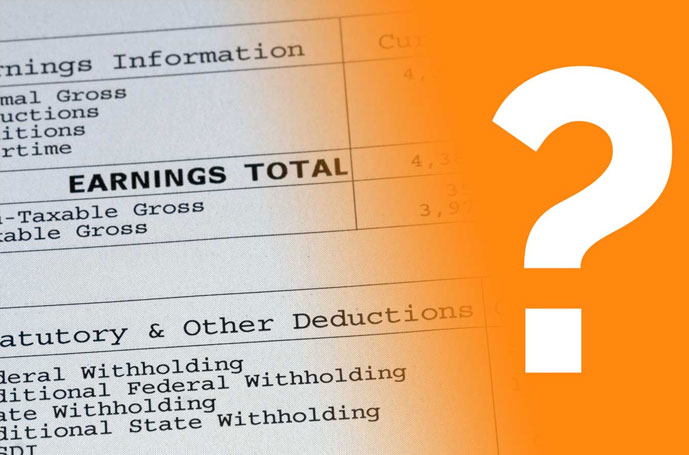In September 2022, new pay transparency legislation was passed in California, known as SB1162. It becomes effective Jan. 1, 2023. This new bill sets a precedent for greater pay transparency in California and beyond. The Californian Equal Pay Act already requires firms to provide equal payments for similar roles, permitting the open disclosure of salaries to ensure accountability for pay inequities. However, this new bill enforces more stringent rules on how salaries are disclosed and reported.
So with that said, here we'll discuss what you need to know about this law and how it affects payment regulations throughout the U.S.
Let's dive in!
What Is SB 1162, and How Does It Affect Pay Transparency?
Senate Bill 1162 was passed by California Governor Gavin Newsom earlier this year. The law builds on existing directives under the Labor Commissioner within the Department of Industrial Relations that require employers to do two things:
Employers provide pay scales upon request for the position a job seeker is applying for.
All private sector employers with 100 (or more) employees or federal contractors with 50+ employees submit an Equal Employment Opportunity or EEO-1 report annually. This permitted employers to:
- Send an EE01 in place of a pay data report.
- Allowed organizations with multiple establishments to submit a consolidated report.
However, this new bill makes several changes to these provisions.
Understanding SB 1162 Legislation
In short, here's what the new bill entails:
Pay Data:
A private employer with 100 (or more) employees must provide a pay data report. It no longer authorizes an EEO1 in lieu of a pay data report.
Federal labor contractors must also provide a pay data report to the Civil Rights department (within the Business, Consumer Services and Housing Agency).
Interestingly, federal labor contractors can no longer submit a consolidated pay data report. Instead, they must file independent pay data for each establishment their business works with.
Pay data reports must be submitted by May 23 and, after that, every second Wednesday. Otherwise, the organization will face a penalty of $100 to $200 per employee for which data hasn’t been disclosed.
Record Keeping:
Previously, the EEO1 form asked employers to provide compensation data on their employee's race, ethnicity, sex, and job category.
Building on this, a pay data report under SB 1162 legislation requires employers to add more details concerning how these categories relate to each other. For instance, pay ranges and hours worked.
More specifically:
Employers have to keep records of each employee's job title and wage.
Pay data reports must include the median and mean hourly rate within the various categories an employee falls under. For instance, race, ethnicity, sex, and job category. This needs to be recorded and filed throughout your employee's time at your company.
Payment Disclosure:
When employers with 15 or more employees publish a job posting, they have to include a pay scale as standard - not just upon request. This applies regardless of whether the company has employed a third party to list their job ad.
What Does the SB 1162 Pay Data Report Include?
The pay data report should include information about the following:
Aggregated compensation data against employees as they fall into different categories, such as race, ethnicity, sex, and job category. You’ll also need to include how their annual earnings compare to the pay bands used by the U.S. BLS Occupational Employment Statistics survey. On top of that, you’ll have to list each employee’s median and hourly rate for each job category.
The Bottom Line
This new law aims to ensure that employers review their compensation policies regularly so that any pay disparities and/or inequalities are flagged. Then, they can use this information to rectify any issues.
Pay Transparency Laws Across the U.S.
Interestingly, it’s not only California where pay transparency laws are in effect. Many other states and regions are introducing similar pay transparency laws, most notably:
New York City
Since Nov. 1, 2022, advertised job listings within the jurisdiction of New York City now require employers to list salary ranges.
Under the NYC Human Rights Law, employers must disclose a minimum and maximum salary of said position in good faith, to the best of the employer's knowledge (i.e., the salary listed cannot be open-ended) This pay range doesn’t include other forms of compensation like insurance or vacation and overtime pay.
Failure to accurately provide this information can result in civil penalties of up to $250,000.
Rhode Island
Rhode Island has signed the S0270A legislation, which expands the Rhode Island Pay Equity Act. This update goes into effect Jan. 1, 2023. Under this law, employers must disclose wage ranges upon request (before hiring) and at the time of hiring. It also stipulates that employers can’t use an employee's previous salary as a condition for hiring or to determine their wage.
Washington
In Washington, a new statutory requirement for the Equal Pay and Opportunities Act becomes effective on Jan. 1, 2023. This act, also known as RCW 49.58.110, empowers applicants to request salary ranges when applying for a position. Employers must then meet the minimum wage provided.
What Does This Mean for HR Executives?
With several new pay transparency laws introduced, HR execs need to track salary data more rigorously than ever before.
They’ll also need access to compensation data concerning the broader market to ensure they set competitive pay scales before recruiting for new roles.
However, conducting a compensation market analysis that’s thorough enough to provide accurate, valuable data can be a painstaking process. This takes time and resources that many companies don’t have.
How Can LaborIQ Help?
LaborIQ helps you determine salary benchmarks against current and future market rates. This data-driven information keeps your compensation competitive and in market range with salary recommendations for 20,000+ jobs by location, industry and company size.
Of course, SB1162 and similar pay legislation requires companies to up their pay reporting game. LaborIQ provides unlimited reporting and access to AI-driven analytics to help you stay compliant.









